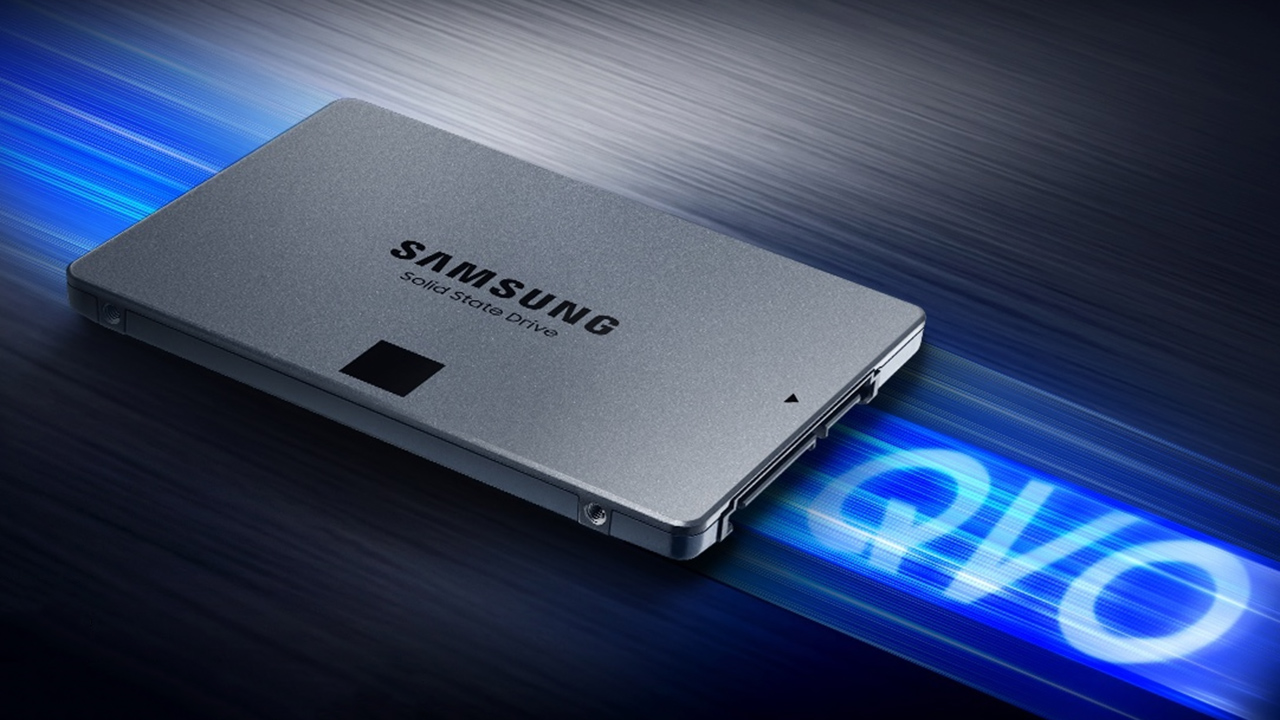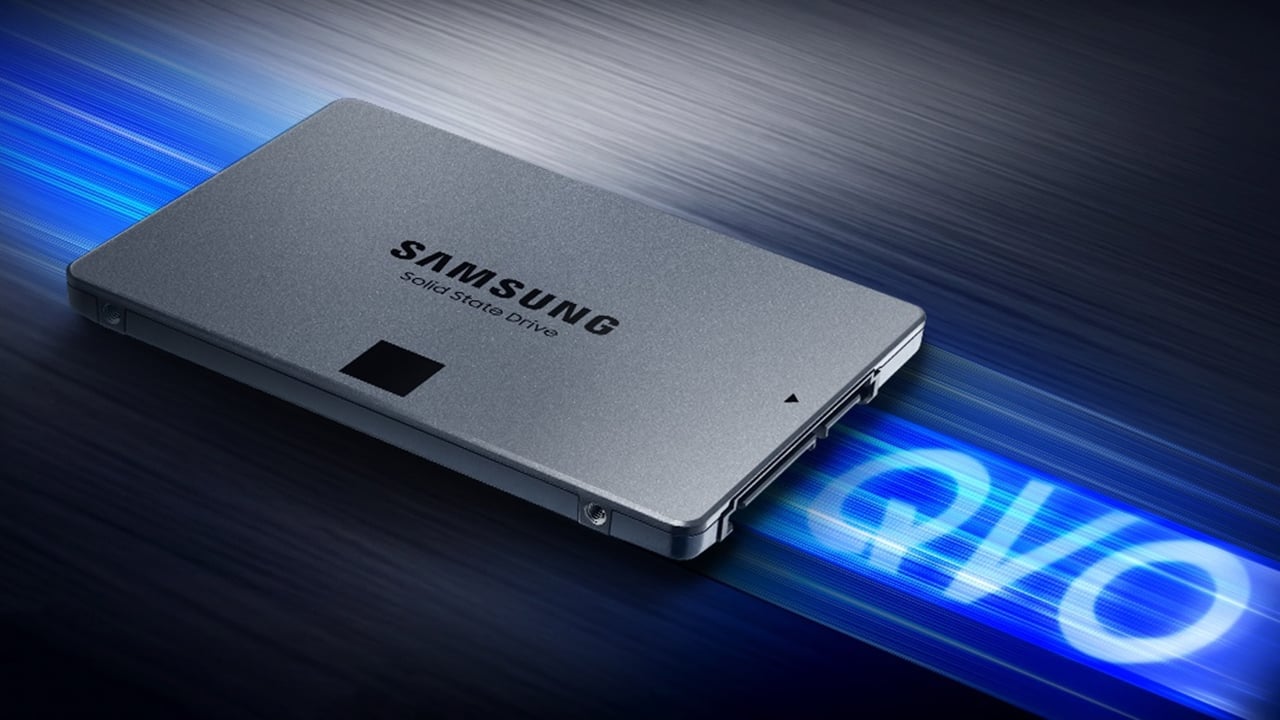

Our recent article about QLC NAND based SSDs stirred some emotions. But here's why you should be taking a much longer term look at this technology, and why it is so important for the future of SSDs.
My recent news piece about Samsung 860 QVO SSDs prompted a furore that was only a small step short of spilling someone’s pint at the local pub.
The two points that were repeated in the comments were concerns about the longevity of QLC NAND and the relatively slow speed compared to modern day hard drives.
These comments were perfectly correct, however I consider they missed the larger point which is that QLC takes us another significant step along the road to ubiquitous SSDs.
To put this in context, the first SSD I used was the Intel X25-M in 2008 that had a capacity of 80GB with MLC NAND fabricated at 50nm and a price around £300.
Huge advances
In the intervening ten years we have seen huge advances in every part of the SSD. Mainstream NAND has moved from MLC to TLC and is stacked in 3D to 64-layers or 96-layers. The M.2 form factor has been introduced along with the NVMe PCI Express interface, SSD controllers typically have two or three ARM cores and you often get a large cache chip to buffer data and to assist trash management. The fabrication process for NAND is typically in the region of 15nm which allows manufacturers to cram more cells into an ever-smaller space.
Add up all of these changes and the result is that we can now buy 2TB SSDs in M.2 form or 4TB in 2.5-inch form for desktop duties or we can stretch to 8TB for Enterprise.
Designing SSDs is a balancing act as the improvements that have increased capacity and reduced prices typically come with a downside. Shrinking the fabrication process means the chip maker can squeeze more cells into a given area however it also reduces longevity. Back in 2012 Kingston sold SSDs that were rated at 3K (1,000 data cycles) and 5K depending on which part of the wafer was used for specific NAND dies. Moving from SLC NAND to MLC to TLC with, respectively, one, two or three pieces of data per cell increases the capacity of the SSD. Clearly the move from SLC to MLC pretty much doubles capacity and a further move to TLC adds a further 50 percent. If a certain number of NAND chips in SLC gives you 250GB, that would equate to approximately 475GB in MLC or 700GB in TLC. You lose some potential capacity as SSDs will allocate a chunk of capacity for cache so your new 2TB SSD may have 50GB-80GB working in SLC mode.
Switching from SLC to MLC to TLC means, as we have previously discussed, that you increase the number of voltage states that are required to define the data. It’s a power of two thing so SLC has two states, MLC has four and TLC has eight. As cells deteriorate over time they find it harder to differentiate between one state and other which means they are retired by the firmware. Some of the over-provisioned cells that are held in reserve are promoted to daily duties and over time the SSD gradually dies.
In addition it takes longer to read and write at the correct voltage state which means the NAND operates at a slower speed. To help the process SSD manufacturers have moved to more complicated controllers with either two or three ARM cores.
Stacking
Stacking chips in 3D increases data density which means you can pack 1TB or 2TB in a single stack. This is an impressive technical feat but once you pass the point where you are able to package, say, 2TB in a 2.5-inch form factor SSD the benefit for PC and laptop users is not immediately apparent. This is a technical development that has a broader technical thrust as a single NAND stack can be packaged on an M.2 drive or soldered directly on the mainboard of a device. Think in terms of Smartphones, iPads and Macbook Air and you realise that removable SSDs are only part part of the portfolio for the chip companies.
As NAND stacks get taller we can expect to see drive capacities increase and while we demand 4TB and 8TB in a single drive, there will be a simultaneous move in the world of Smartphones to 512GB and then 1TB. The only thing likely to change that direction of travel is really good 5G connectivity that might convince mobile users to rely on instantaneous Cloud storage.
Samsung 860 QVO adds QLC to their extensive product portfolio with capacities of 1TB, 2TB and 4TB. QLC adds approximately 30 percent capacity over TLC however QVO drives are slower than EVO and there is also a question mark over the longevity of QLC NAND.
It must surely be obvious that no-one sensible would consider plugging a Samsung 860 QVO drive into their Atomos (or other) recorder until the media appears on the manufacturer’s list of approved media.
Similarly if you decide to add a QLC drive to your workstation it would be wise to use the SSD as non-critical work space rather than a repository for a project with a significant financial or emotional value. Over time we will gain a sense of whether or not we trust QLC NAND and we will doubtless start to think about 5-level NAND. The snag there is that Quint also starts with Q so if the idea proves to be technically possible they will also have to come up with a new name.
Why care?
A more immediate question is why anyone should care about QLC when the 4TB Samsung 860 QVO has similar transfer speeds to a decent hard drive, while the prices of the 1TB and 2TB models are barely cheaper than existing SSDs.
True enough. The most obvious answer is that SSDs have much lower latency than HDD as they don’t have to wake or spin up to speed but instead they just start working. When it comes to pricing the trend is downwards and QLC plays its part. If you look at 4TB SSDs you will find the 4TB Samsung 860 PRO sells for £1290 and the 4TB Samsung 860 EVO is now £800. By contrast the 4TB Samsung 860 QVO will likely go on sale at £600 which is very good news.
The most important thing for me is that it signposts the way to an 8TB SSD priced at £999 in a year or two. Slowly but surely we are heading towards a world where SSDs are the only sensible option for storage and QLC is part of that process.
Tags: Production


Comments